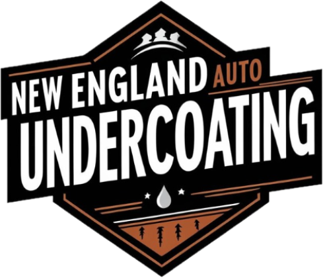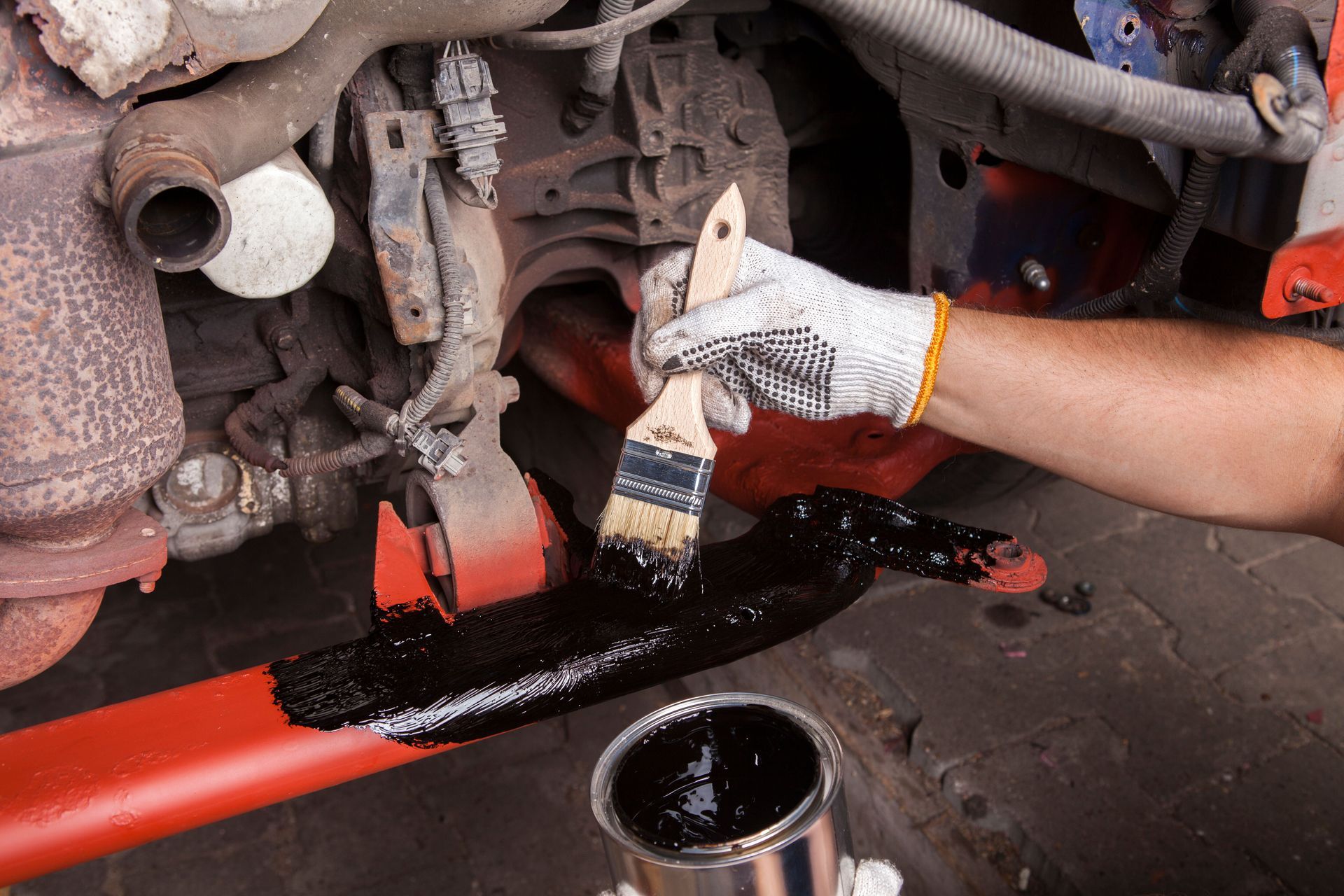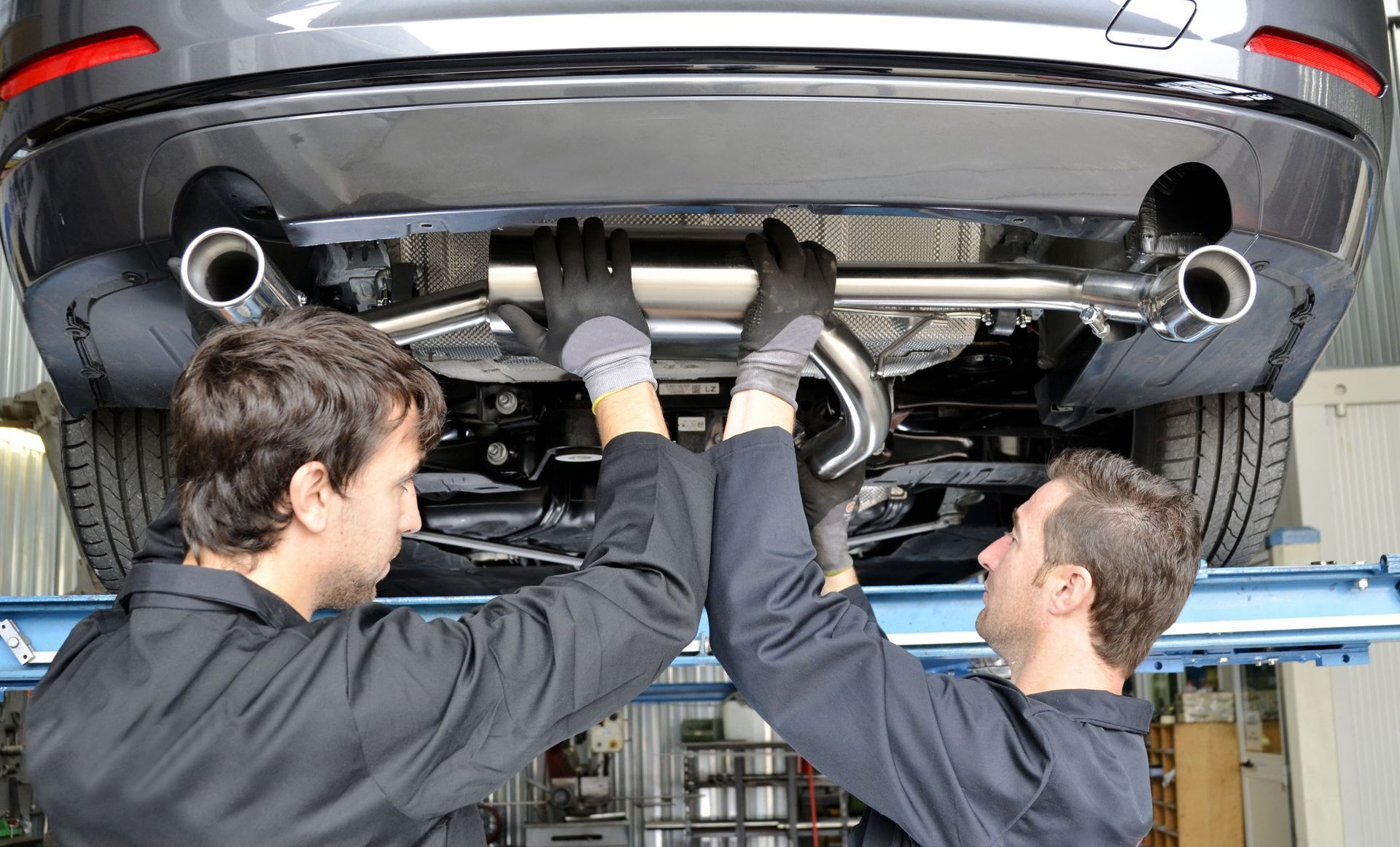August 25, 2025
Auto rust prevention continues to be a vital part of automotive care despite advances in manufacturing technology. Corrosion remains a persistent threat that can compromise both the safety and appearance of vehicles over time. Implementing effective rust-proofing measures helps protect your investment by reducing costly repairs and maintaining vehicle value. This article explores the financial impacts and long-term benefits of auto rust prevention for new cars.
Understanding the Hidden Threat of Rust on Modern Cars
Rust, a result of the chemical reaction between iron, oxygen, and moisture, is a formidable force against metal. This process not only affects the aesthetic appeal of a vehicle but also compromises its structural integrity. As iron oxidizes, layers of metal flake away, creating weak spots. These weakened areas make vehicles more susceptible to damage from accidents and general wear and tear. Continuous exposure to moisture and air accelerates rust, emphasizing the need for proactive rust prevention.
Despite advances in manufacturing, modern vehicles remain vulnerable to rust. The inclusion of lighter metal alloys aimed at fuel efficiency does not eliminate corrosion risks. These metals are often more susceptible to rust under specific environmental conditions. Manufacturers have integrated protective coatings and paint layers, but they are not foolproof. Continued development in materials science is essential to offset these vulnerabilities.
Environmental conditions play a pivotal role in rust formation. Humidity levels, especially in coastal regions, enhance the likelihood of metal oxidizing. Road salt used in winter months further exacerbates this issue, speeding up the corrosion process. Vehicles parked near industrial zones are also exposed to airborne pollutants contributing to rust. These factors necessitate rigorous rust prevention measures to protect vehicles from these unavoidable conditions.
Despite technological advances, reports continue to surface about rust issues in modern vehicles. Case studies reveal that even brand-new cars show signs of rust within the first few years. According to Business Research Insights, the global automotive rust protection module market was valued at $1.99 billion in 2024. This figure is projected to reach $3.39 billion by 2033, indicating ongoing rust concerns.
Exploring the Financial Implications of Ignoring Rust Prevention
Rust significantly diminishes a vehicle's resale value. A car with visible rust damage appears neglected and poorly maintained. Potential buyers see rust as a sign of deeper, more costly mechanical issues. Vehicles with rust typically require substantial discounts to attract buyers. Owners lose thousands of dollars to rust-related devaluation when selling their cars.
The financial burden of rust repairs often surpasses preventive treatment costs. As rust spreads, it requires exhaustive repairs, including sheet metal replacement and repainting. Repair shops find it challenging to eradicate rust completely, leading to recurring maintenance expenses. Proactive rust treatments, although initially costly, prove more economical long-term. Regular application ensures vehicles stay protected and costs remain low.
Rust damage can complicate insurance coverage for car owners. Insurers may deny claims related to rust damage, citing lack of maintenance. Rusty vehicles can attract higher premiums owing to perceived risk and reduced safety. Insurance companies recommend regular rust prevention as part of comprehensive maintenance. Engaging in rust-proofing measures could, therefore, result in reduced insurance costs.
Neglecting auto rust prevention can lead to significantly higher ownership costs over a vehicle's lifespan. Corrosion undermines essential components, leading to frequent repairs. Rusted parts result in failure of integrated systems, necessitating costly replacements. The cumulative financial burden makes owning a rust-damaged vehicle an expensive endeavor. Investing in rust prevention is a strategic move to lower overall ownership expenses.
Reviewing Technological Advancements in Rust Prevention
Coating technologies have evolved significantly to combat rust. Manufacturers utilize advanced paints that form robust barriers against moisture and pollutants. Innovative coatings enhance adherence, providing long-lasting rust protection. These technologies balance aesthetic appeal with high performance in diverse conditions. Continued research promises coatings that minimize rust even further.
Electronic rust protection modules use electrical currents to prevent corrosion. These units emit a small electrical charge that interrupts the chemical process of rust formation. The effectiveness lies in protecting hidden areas often overlooked in manual treatments. The global market for these systems is expanding considerably, as noted by Business Research Insights. Initially costly, these systems offer long-term savings and impressive results.
The development of chemical treatments has brought easy-to-apply solutions to the forefront of rust prevention. Rust converters and inhibitors chemically alter rust, halting its progress. These treatments are easily accessible and economically viable for most car owners. Innovative formulas provide deep penetration, protecting areas unaffected by traditional coatings.
Integrating auto rust prevention into manufacturing processes has become a standard practice. Manufacturers apply rust-resistant coatings and sealants during assembly. Advanced manufacturing techniques incorporate rust prevention into vehicle designs. These methods reduce the chance of rust forming before cars reach consumers.
Highlighting Environmental Benefits of Rust Prevention
Effective auto rust prevention significantly increases vehicle lifespan, reducing the need for premature replacement. Increased longevity decreases the demand for new vehicle production. With fewer cars needing replacement, the environmental strain associated with manufacturing lessens. A longer-lasting vehicle contributes to sustainable transportation practices.
Rust prevention minimizes waste by reducing the frequency of vehicle disposal. Fewer discarded vehicles lead to less landfill waste and resource recapture. Minimizing waste also conserves raw materials otherwise extracted for new car production. Reduced demand on resources supports ecological conservation and ecosystem health. Sustainable automotive care practices foster waste reductions and resource efficiency.
Governments worldwide promote sustainable car maintenance through regulations and incentives. Policies encourage rust prevention practices, integrating them into vehicle standards. Tax incentives and rebates entice vehicle owners to invest in eco-friendly rust solutions. These measures reflect a governmental shift towards prioritizing environmental sustainability. Collaborative incentives benefit the automotive industry, consumers, and the environment alike.
Widespread adoption of auto rust prevention practices yields substantial global environmental benefits. Effective measures ensure resource conservation and reduced automobile-related waste. Cleaner production processes support healthier ecosystems worldwide. The ripple effects of sustainable practices demonstrate the automotive sector's potential for environmental stewardship.
Implementing Effective Tips for Rust Prevention
Routine maintenance plays a pivotal role in preventing rust development. Washing vehicles regularly removes pollutants and salt, two rust accelerants. Inspecting areas prone to moisture accumulation helps in early rust detection. Keeping drainage channels clear ensures water doesn't pool around metal components. Regular application of sealants prolongs protection and maintains coatings.
Choosing effective rust prevention products depends on vehicle type and its environment. Quality rustproofing solutions should withstand specific weather conditions and usage patterns. High-grade coatings and electronic modules offer tailored protection layers. Not all products suit every vehicle, so informed selections ensure optimal rust deterrence. Professional advice aids in making appropriate decisions on rust prevention measures.
Seasonal changes necessitate adjustments in rust prevention strategies. Winter warrants added vigilance due to increased road salt exposure. Spring cleaning involves washing away residues and applying fresh protective coats. Seasonal inspections allow timely interventions to address emerging rust spots. Proper preparedness ensures continuous protection regardless of seasonal conditions.
Avoiding common rust prevention mistakes ensures maximum protection efficacy. Neglecting hidden areas often leads to unnoticed rust proliferation. Using incompatible products might compromise existing coatings, leading to damage. Over-reliance on single methods without inspections might result in incomplete protection. Comprehensive care accompanied by regular inspections prevents unforeseen rust issues.
The necessity of auto rust prevention treatments for new cars cannot be overstated. While manufacturing advances continue to evolve, external factors propel rust-related challenges. Proactively securing vehicle longevity demands attention and investment in rust-proofing practices. Contact New England Auto Undercoating for rust prevention solutions you can count on.


